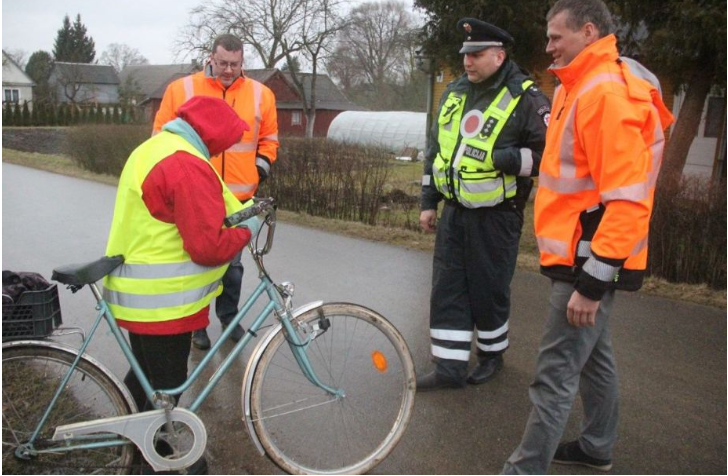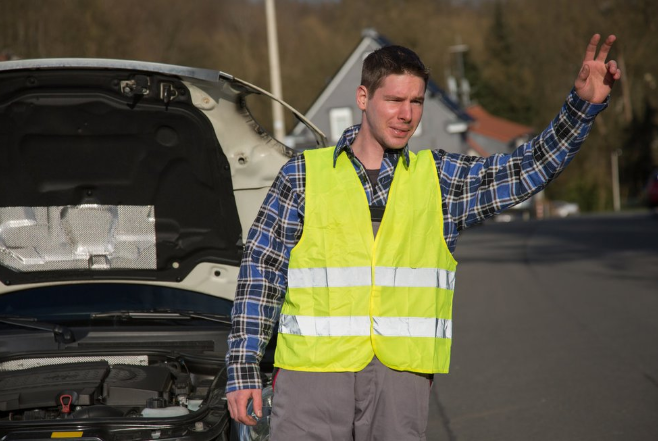Getting your child to travel to school or in private is a great challenge for parents. Dijokait, Chief Specialist of the Vilnius County Police Headquarters Traffic Police Board, author of the book “Road Traffic Rules for Children”, says that it is up to parents how the child will behave in the street. The official says it is not enough to discuss the traffic rules with the offspring once and hope that things have become clear – responsible behavior and potential dangers need to be spoken in a language that children can understand.
Officer A.Dijokait is known by many children not only in the capital but also in other Lithuanian cities and towns – she has been teaching them the rules of road safety at various events and special lessons for more than 10 years. Groups of toddlers and teenagers are coming to the Traffic Safety Class at the Vilnius County High Police Commissariat’s Road Police Board, where attractive traffic safety lessons are being organized. In the classroom, adults are also learning: parents, educators, students, and seniors. A 15min talk with an officer about how parents can prepare their child to break into the traffic stream. Road safety lessons are spent in kindergartens, schools, special projects, and events. Can parents expect this to give their child the most important knowledge? Although I am constantly working with children of all ages, the rules of road safety are also discussed in kindergartens and schools, but the primary responsibility for this knowledge lies with the family. After all, parents are the greatest authorities of children, the best teachers, they know the peculiarities of their child, their behavior in certain situations. The conversation between parents and children about traffic safety mustn’t be abstract and one-off, but repetitive and detailed, and comments in real-life situations help a lot – pedestrian behavior with both right and wrong can help. It is not enough for a child to wish: “Be safe!” It doesn’t mean anything. Parents must teach him how to be safe. And not just to teach, but to constantly observe how he follows the rules. Of course, there is no need to formalize everything, but let’s say the topic of yesterday’s talk maybe about how well your child has crossed the street and the safety of a child’s passenger while traveling by car. As a general rule, the child should be constantly talked about and reminded of how to stay safe in traffic.
of course, there is no need to frighten children down the street: “you are going to die!”, “You will be met!”. We need to talk about the diversity of people and situations. I think the fundamental mistake would be to teach children just the rules, but not to see the danger, not to talk about how to avoid it. After all, paying for and following a rule may mean that a child is in distress – precisely because he or she has followed the rule, but another road user – the driver of a car, bike or even an electric scooter – has failed to comply! Thus, the primary purpose of traffic safety training is to present a bouquet of knowledge and to prepare the child for the journey so that the child can see and avoid the dangers of the traffic environment. A child can’t draw only an ideal world, he must understand that even in a pedestrian crossing it may be unsafe. Of course, there is no need to frighten children down the street: “you are going to die!”, “You will be met!” We need to talk about the diversity of people and situations. For example, when traveling with a child, it is possible to notice which drivers are talking on mobile phones or with passengers, explaining that such a driver may not be noticeable in the child’s crossing. Even the various children’s poems call for courageous steps, but I would say that it is not courage but wisdom and caution. Talking with your child starts with the essentials, which are that there are two parts of the streetcars for cars, sidewalks, and sidewalks – for pedestrians, and good road traffic rules to ensure safe use and harm. After all, rules do not exist anywhere if they do not exist in our daily behavior.
By what age are children well aware of the rules of the road? Kids 3 to 5 years old are worth teaching through the rules of the game, and kids 6 to 8 are very receptive, they believe in what you say, they understand and remember well. If we spend the time when the child is receptive and trustworthy, when the adults are their true authority, talking to the teenager may already be difficult as they are already learning from the wrong examples or even from their own mistakes and those around them. I would advise you to talk about road safety with children from an early age, adding to the knowledge that is relevant to the age of the child and would be used daily in real life. It is important to understand that the rules of the road, just like the provisions in the booklet, are too abstract for children. They need a playful presentation, they need to speak his language, then it will be clear. For example, young children often do not distinguish between left and right and this is normal until a certain age. This can be taught through play – songs, exercises, reminders that we eat, write and so on with the right.
What other traffic situations are often left aside when talking to children? It is a mass event and various celebrations – it is necessary to talk to the children that in such cases it is not possible to jump between cars, it is necessary to look for the driver to notice and stop the vehicle. Children also need to be told about the stopping distance of the car, as they demonstrate during the lessons that they expect the car to stop faster than is possible. Few people talk about moving cars in reverse and after all, the accidents that happen are related. Although the driver has to be very environmentally aware while reversing, I explain to the children that everything is possible – his car windows have become dirty or frosted and he has had to clean himself, or he talks on the phone and so on. It is important to point out to the child that he can guess from the sound of moving the car backward, that he can see smoke in the winter, and finally that we all see white lights. Such signals indicate that the machine is moving. What other important things should parents take care of when allowing their child to travel to school on their own? I am glad to see more and more children wearing bright clothes, reflective vests, backpacks, accessories with reflective materials. Parents mustn’t shy away from buying such brightly colored clothing and dress their offspring with it. Adults need to ensure that not only does the child have a reflective tape, carry it, but also learn how to fasten correctly. After all, it is often the case that the only reflector on the backpack and the child is on the highway before the vehicle traffic and is invisible sides (pockets), on a long strip for knee height and free-swinging. If there is a second reflector, let it be on the other hand. The more reflectors on all sides, the more likely it is to be noticed by the driver. Reflectors are optional in cities or other illuminated areas, but I think they are necessary and very important during the dark hours of the day, especially when there is fog, rain or snow. It is safe to say that the reflector is a must, a need and a fashion.









